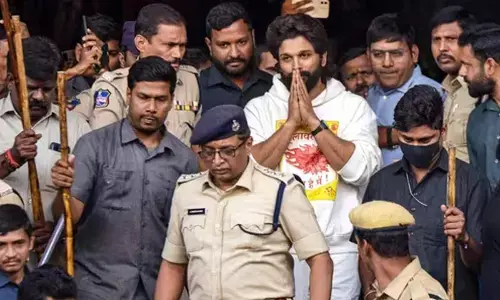Street vendors' rights must be protected

Some food items like samosas, kachoris, bhel puri, pav bhaji and batata vada in India, ramen in Japan, Pad Thai in Thailand and shawarma in Turkey are primarily products of street vendors.
As in other parts of the world, street food has been a source of some gastronomic delights in India. A charm not easy to replicate in other formats.Some food items like samosas, kachoris, bhel puri, pav bhaji and batata vada in India, ramen in Japan, Pad Thai in Thailand and shawarma in Turkey are primarily products of street vendors.
But street vending is not just about serving regional delicacies or satisfying a person's hunger at reasonable prices. It is also about selling a host of other items of consumption at a fraction of what it would cost in a regular shop since the former format does not have the load of some state levies.

For society at large, it is also a matter of livelihood for more than 10 million people in India alone, as per official estimates. Many find it to be a good avenue for employment, especially migrants to urban areas from the hinterland.
The contribution of street vendors cannot, thus, be undermined. Even the Supreme Court held in 1989 that street vendors have a fundamental right to pursue their trade with proper regulation. Yet, for long, those who are meant to extend them protection while pursuing their trade have often turned adversaries.
Street vendors have been exploited and their plight remained neglected. Much of this has to do with lack of clear guidelines for their vocation, coupled with the "hafta", or protection/extortion-money, they have to dole out to the staff of municipal corporations and the police.
Now, a ray of hope comes with the passage of a model bill by parliament to protect their livelihood and regulate the trade. This is the right step forward. But the delivery of what is officially called The Street Vendors (Protection of Livelihood and Regulation of Street Vending) Bill, 2012, is a more serious issue and needs to be tackled as well.
There is the question whether parliament has the powers to pass such a law. Much time was wasted on this. In 2006, in reply to a question in the Lok Sabha, the lower house of parliament, the government said street vending was a state subject. Hence the central government did not have the constitutional mandate to enact such a law. Again in 2009, the government took a similar stand, but said a model law had been prepared for states to adopt.
On the insistence of the National Advisory Council, chaired by Congress party president Sonia Gandhi, the government finally agreed that street vending also covered issues such as social security, employment, workers' welfare and social planning, because of which it fell in the Concurrent List.
The Supreme Court, too, in a verdict delivered in October 2010, directed the government at both the central and state levels to enact laws that looked at the livelihood as well as regulatory issues connected with street vending.
Accordingly, it was decided that matters pertaining to welfare and societal issues of street vending would fall under the Concurrent List. Those connected with municipalities and their functions would be governed under the jurisdiction of states.
Some of the plus points of the bill:
-Demarcation of vending zones along with restrictions
-Compulsory registration and vending certificate
-Formulation of street vending plan every five years
-Mechanism to address grievances, with time frame for decisions
-States to implement within six months of enactment of central law
These provisions have been welcomed. But the model bill also raises some issues.
For example, some states like Andhra Pradesh, Chhattisgarh, Odisha and Rajasthan have enacted laws to protect and regulate street vendors and their trade. But now, some provisions of the central bill are in clear conflict with the state laws.
Major divergences, for example, are in areas like norms for assigning hawking rights, penalties for non-compliance, constitution of a street vending committee, its role and membership, and dispute settlement.
There are other lacunae as well. The parliamentary Standing Committee on Housing and Urban Poverty Alleviation highlighted some of these. Like the bill does not apply to railway land, its premises and trains, which the committee wanted re-visited. An estimated 23 million people in India travel by train every day and hawkers, more often than not, are the main source of food for commuters.
Similarly, the model bill lacks provisions to ensure that all stakeholders are consulted in determining the vending zones. There are also differences between the central model bill and state legislation over powers and duties of town vending committees.
These apart, if vendors with no certificates can be evicted based on the central law, it is equally important to have specific provisions to ensure the police and local authorities do not harass bona fide hawkers. But all that the bill specifies in this regard is that the police or local authorities shall not prevent a registered street vendor from carrying out his vocation under any other law.
Since the thrust of the bill is to protect the interests of street vendors and regulate the trade, there is also the need to earmark specific budgets to carry out these tasks. An independent vigilance wing is also required to prevent extortion. Here, it will serve well if money is earmarked from the luxury tax and other levies the governments collect from restaurants and eateries.
After a global study a few years ago, the Food and Agriculture Organisation (FAO) included street vendors into what it termed as the informal food sector and concluded that this trade flourished in the past despite its legality or state oppression and would continue to do so in the future.
The UN body also said street food vendors must be co-opted as partners in local development. Policies and programmes must be drawn up to cater to their welfare with proper safeguards. It will serve the government well to not just take that advice for the informal food sector but also extrapolate it to the larger community of 10 million street vendors in India.
Next Story




















